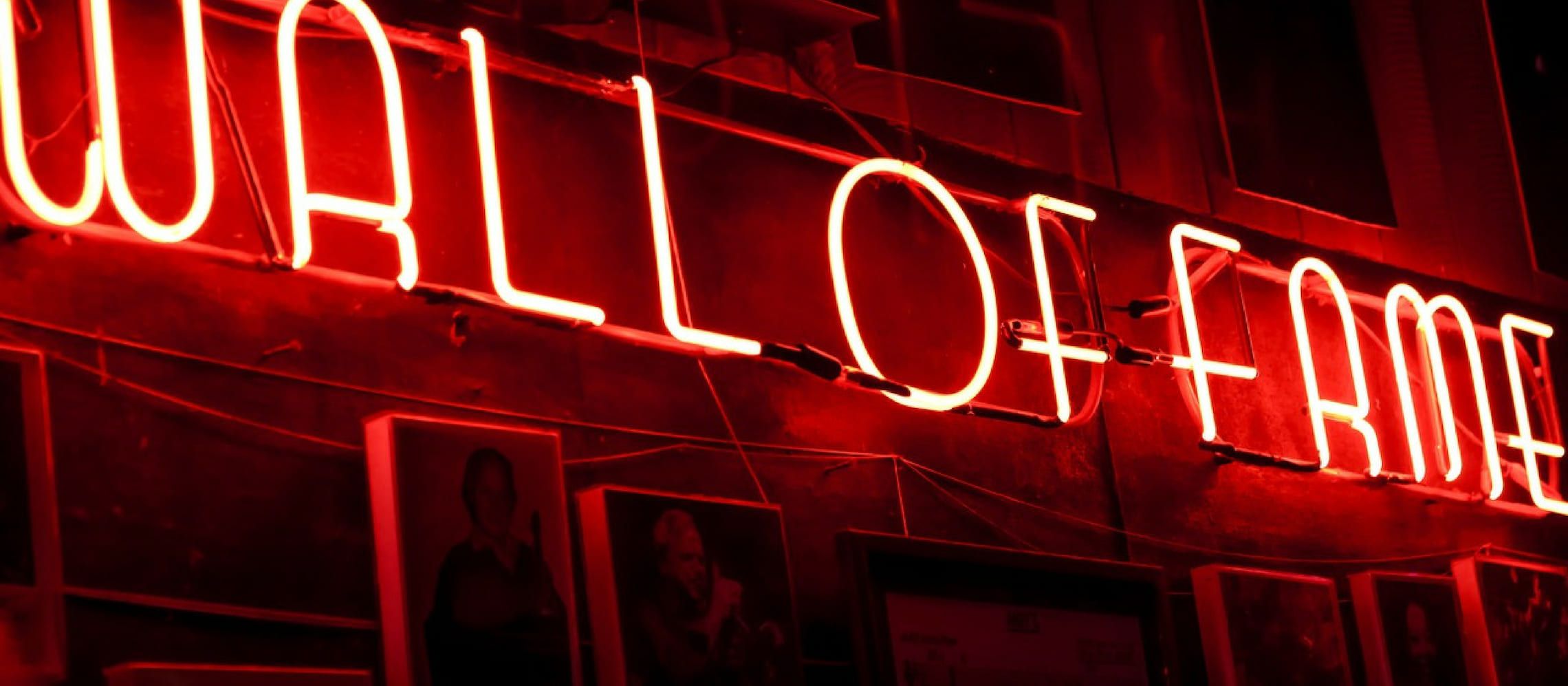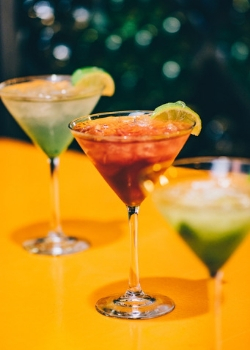Super Early Deadline
30 November 2025
Judging
Date
24 & 25 March 2026
Winners Announcement
22 April 2026
30 November 2025
24 & 25 March 2026
22 April 2026

The dynamic UK drinks market, energized in large measure by changes in consumer attitudes and tastes, provides quite a number of opportunities for a bar venue to make a name for itself.
Whilst alcohol consumption has been on something of a downward curve since around 2010 (down by some 15% in the on-trade, although more or less static in the larger off-trade segment), these figures mask the significant growth in craft and premium alcoholic drinks across sectors – people may be drinking less beer, cider, and wine, but they’re drinking better. Spirits, too, where the worldwide retail value of luxury spirits is forecast to reach over $17.5 billion by 2010, up by two thirds in just 10 years.
If we are to create our own ‘soon-to-be-famous’ bar what are the trends and what can we focus on in particular to help us build a successful business?
Let’s start with the market for no- and low-alcohol (No-Lo). With research showing that a third of people would consider a mocktail if it were on offer, this is clearly an area where a licensee can maximize sales opportunities. The ability to make interesting-tasting cocktails from a plethora of (new) premium mixers and juices now being launched to reflect the tastes of millennials and other young adults is really only limited by imagination: from the original Virgin Mary to a Virgin Sangria and on to an Atomic Cat. Low-calorie and low-sugar mixer options are also bang-on-trend.

Lower-in-alcohol cocktails – those using alcohols at less than 20% ABV – are another growth area, featuring drinks made from the white port and white sherry and tonic, or vermouth and tonic – itself tapping into the ‘& tonic’ trend. This makes for good economics for the bar, too: a sparkling white wine spritzer, for example, is capable of providing multiple serves out of a single bottle of, say, Prosecco – and dozens more with a sub-18% fruit liqueur.
In terms of ‘real’ cocktails, a Negroni – equal measures of gin, Campari and vermouth – matches the trend for more bitter flavors, just as there’s a trend to fruitier, sweeter drinks by other consumer groups, part of consumer palate diversification, with customers seeking out new flavor experiences. However, Negroni is only the second favorite cocktail, the prize being taken by Old Fashioned, said to be the number one drink in nearly a third of the world’s top bars. Whiskey is the main ingredient in the third most popular cocktail, too, a Whiskey Sour.
So a specialism across the range of cocktails is certainly one step on the road to fame (and commercial success) – but there are others.
Whiskey’s showing in terms of the top cocktails is a sign of the continuing love that consumers have for the drink (in this case rye and bourbon). Scotch provides indulgence and authenticity to any bar – and choice, too. However, UK law makes it difficult for Scotch to mirror the growing consumer demand for lower alcohol and more variety (for ‘variety’ read flavors) and it’s not a product that can easily follow fashion (and certainly not quickly). Yet Scotch provides a bar with wide choice through its clear reflection of where it’s produced, the ingredients used, the production methodology, how, where, for how long, and in what wooden barrels, it’s aged. Secondary finishes, too, using bourbon, or sherry, wine or beer casks, add another level of flavor. So, with over 120 active distilleries, 5 whiskey-producing regions and some160 single malt brands, 50 blended malt brands, over 100 blended whisky brands, and 50-grain whiskey brands, plus rare and scarce whiskies, all can all work to make a name for a venue.
And then there’s gin: the figures for gin sales show phenomenal growth since Sipsmith gained the first gin distilling licence for nearly two centuries, some 10 years ago: gin sales have now reached £1.6 billion, up over £500 million in a single year, with more than 350 distilleries producing gins of every colour and flavour profile (with literally thousands of new gin labels and names registrations). Premium gins are driving the category, up 32%, as against ‘standard’, big brand gins up only 5%. Gin is a business driver for any venue and the wide repertoire of gins represents an opportunity for a bar to build itself a reputation: through stocking gins from a local or regional distillery, as well as a representative sample of flavour profiles from the myriad botanicals available to the distiller, plus some ‘trophy’ gins to create interest and to draw in the punters with displays of special packaging, fancy bottles, and the serving of wonderful-looking and tasting cocktails. All this makes for great Instagram pictures as part of an effective social media programme designed to build interest: you could do worse than feature a bottle of Cambridge Distillery’s Watenshi gin, produced in batches of only 6 bottles (a fact that’s reflected in the price), and one of the rarest gins in the world, made from the ‘angel’s share’ of their award-winning Japanese gin to create a new gin that’s has a highly concentrated and extremely intense savour.
Premium rums and tequilas are other spirits which represent excellent sales opportunities for venues: by 2020 luxury rum sales are forecast to have grown to $230 million, meeting consumer demand for new recipes, unique flavours and older expressions with smoother finishes.
The tequila market is forecast to grow at 4% CAGR to reach $6.36 billion by the end of 2025. Clearly, there’s considerable consumer interest and both spirits would provide opportunities for a bar to specialise in the countries of origin, with either a Caribbean or Mexican theme. Of course, these spirits make ideal cocktail ingredients and can help work to create a craft cocktail destination venue in its own right.
So what are the opportunities for specialisms in beers and ciders? Both represent opportunities to build craft venues: 2018 saw more Pilsner and Helles craft lagers introduced from the UK’s over 2,500 breweries, many of which are expanding, with the capacity to produce new and innovative quality products to capture consumer attention – in fact, over 2,600 new beers have been launched over the last 5 years, adding around £320 million in sales. As the same time, brewers are also showing more interest in traditional craft beers with a focus on spontaneous fermentation and oak ageing.
It’s the same with ciders, with consumers looking for low intervention, high apple content ciders (whilst on a different level, it’s consumers who are driving the growth in mass market fruit ciders).
Summing all this up, it’s craft drinks and premiumisation across the board which are driving the growth of drinks sales. The strength of this growth presents opportunities for venues across the range of drinker demographics throughout the UK.
The start point is researching and understanding the particular demographics in your catchment area so your stocking policy best reflects what your consumers are (most likely to be) interested in. Making your bar famous is about the product – this can be either through its range or focus (or both); the service – the venue’s personnel are its ‘soul’; and the overall venue experience (a combination of these elements). Get this right and making it more famous is then about how you promote it beyond old-fashioned ‘word of mouth’ using the panoply of (digital) marketing tools at your disposal today, together with imaginative venue events, to draw in and build your clientele. The market may be crowded, and it may be competitive, but it’s still possible to do famously good business.

The article is contributed by Alistair Morrell, Wine Inspector, wine industry consultant, journalist and, commentator. Over 30 years as a wine business professional, Alistair shares his global knowledge, network, and experience of growers, importers, distributors and buyers.
Show your spirits where it matters. Get your products tasted by top bartenders, buyers and experts at the London Competitions — enter now.